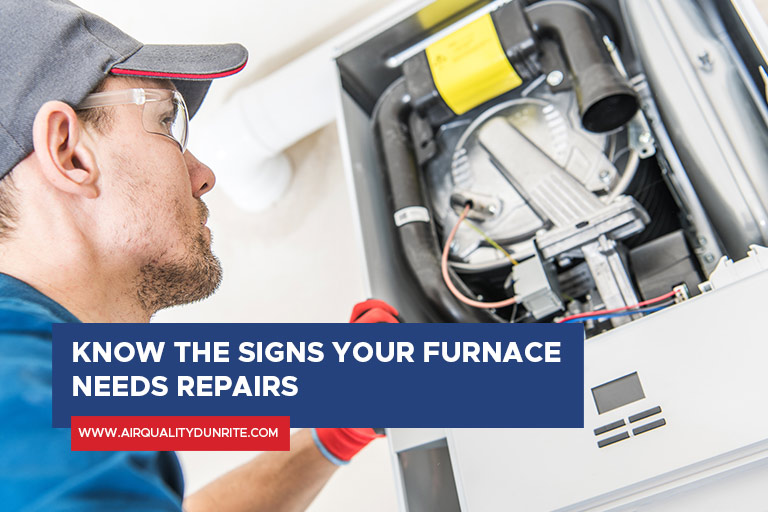Credit: Vlada Karpovich | Pexels
Furnaces play a pivotal role in maintaining comfort in Canadian homes, especially during harsh winters. Understanding how your furnace works, its maintenance needs, and when to seek professional assistance is crucial for ensuring a warm, safe, and efficient home environment. This guide delves into the various aspects of furnace care and operation, providing homeowners with essential knowledge to manage this vital component of their home heating system effectively.
Anatomy of a Furnace: Components and Functions

The Heat Exchanger
At the heart of every furnace is the heat exchanger, a critical component responsible for transferring heat to the air circulated through your home. Understanding its function helps in identifying issues like cracks, which can lead to dangerous carbon monoxide leaks.
The Blower Motor
The blower motor plays a crucial role in circulating warm air throughout your home. Regular maintenance of the blower motor ensures efficient airflow and reduces the strain on your furnace.
The Thermostat
As the control center, the thermostat regulates the temperature by signalling the furnace to turn on or off. A properly calibrated thermostat is essential for comfort and energy efficiency.
Filters and Ductwork
Air filters trap dust, allergens, and other particles, maintaining air quality and protecting furnace components. Regular filter replacement and duct cleaning are vital for optimal furnace performance.
Understanding Furnace Efficiency Ratings
AFUE Ratings Explained
Annual Fuel Utilization Efficiency (AFUE) measures furnace efficiency in converting fuel to heat. Higher AFUE ratings indicate more efficient furnaces, leading to lower utility bills and reduced environmental impact.
The Importance of High-Efficiency Furnaces
Investing in a high-efficiency furnace provides long-term savings and environmental benefits. Modern furnaces with high AFUE ratings offer superior performance and energy savings.
Maintenance: Key to Longevity and Efficiency
Regular maintenance is the cornerstone of ensuring your furnace operates effectively and efficiently. By keeping up with routine checks and addressing minor issues promptly, you can extend the lifespan of your furnace and improve its overall performance. Here’s what you should consider:
- Professional Inspections: Annual inspections by certified technicians are essential. They can identify and rectify issues that might be invisible to the untrained eye, such as wear and tear on internal components or blockages in the ventilation system. This preventive approach often saves money and time on more significant, costly repairs later.
- Filter Changes and Cleaning: The simplest yet most effective maintenance task is regularly changing air filters. This not only improves air quality but also prevents the furnace from overworking due to restricted airflow. Additionally, cleaning around the furnace and ensuring vents are unobstructed maintains good air circulation.
- Thermostat Checks: Ensuring your thermostat is functioning correctly is crucial. A malfunctioning thermostat can lead to excessive cycling of the furnace, increasing wear and tear.
- Seeking Professional Help: Whenever in doubt, it’s wise to seek heating and furnace repair near you. Professional furnace repair services can handle complex issues that go beyond routine maintenance, ensuring your furnace operates safely and efficiently.
Common Furnace Problems and Solutions

Furnaces, like any other mechanical system, can experience a range of issues. Being aware of common problems and their solutions can help you address them swiftly:
- Malfunctioning Thermostat: A faulty thermostat can lead to heating inconsistencies. Check the batteries and settings first. If the problem persists, consult a professional.
- Dirty Filters: Clogged filters restrict airflow, straining the furnace and compromising air quality. Regular replacement or cleaning of filters is a simple yet effective solution.
- Ignition or Pilot Control Issues: A malfunctioning ignition or pilot could make it difficult to heat a home. This can stem from a faulty electrical component or a clogged pilot orifice. Professional furnace repair services are often needed to safely address these issues.
- Yellow Pilot Light: The pilot light should be a steady blue flame. A yellow flame indicates a ventilation problem, possibly due to carbon monoxide, which is dangerous and requires immediate professional intervention.
- Frequent Cycling: If your furnace cycles on and off too frequently, it could be due to a bad thermostat setting, a clogged filter, or improper airflow. Checking and rectifying these elements can resolve the issue.
- Noisy Operation: Rumbling, squeaking, or rattling noises can indicate mechanical problems, airflow reductions, or a clogged burner. A professional diagnosis is usually required to identify and fix the underlying cause.
- Inconsistent Heating: If some rooms are colder than others or the furnace struggles to maintain a set temperature, it could signal problems with the blower or ducts.
- Increased Energy Bills: A sudden spike in your energy bills without a corresponding increase in usage suggests your furnace is operating inefficiently.
- Poor Air Quality: An increase in dust, soot, or rust particles, especially around the furnace registers, can indicate that it’s time for a professional checkup.
Upgrading and Replacing Your Furnace
Here’s what to consider:
- Age and Efficiency: If your furnace is over 15-20 years old, it might be time to consider a replacement. Newer models are more efficient and can significantly reduce your energy bills.
- Frequent Repairs: If you’re frequently seeking furnace repair services, the costs can add up, making a new furnace a more economical option in the long run.
- Rebates and Incentives: When considering a new furnace, explore options like the Toronto heat pump rebate. These incentives can make upgrading more affordable and environmentally friendly. Find a shop offering discounts, like a Toronto heat pump rebate.
- Professional Advice: Consult with a heating professional to determine the best option for your home. They can advise on the right size, type, and model of furnace, considering your specific needs and home layout.
Your furnace is a key component in maintaining a comfortable and warm home. Regular maintenance, understanding common issues, and knowing when to seek professional help are crucial for its optimal operation. For reliable furnace repair in Toronto, contact Air Quality Dunrite at (416) 342-1939. Remember, taking care of your furnace not only enhances your home’s warmth but also contributes to your overall well-being and safety.



